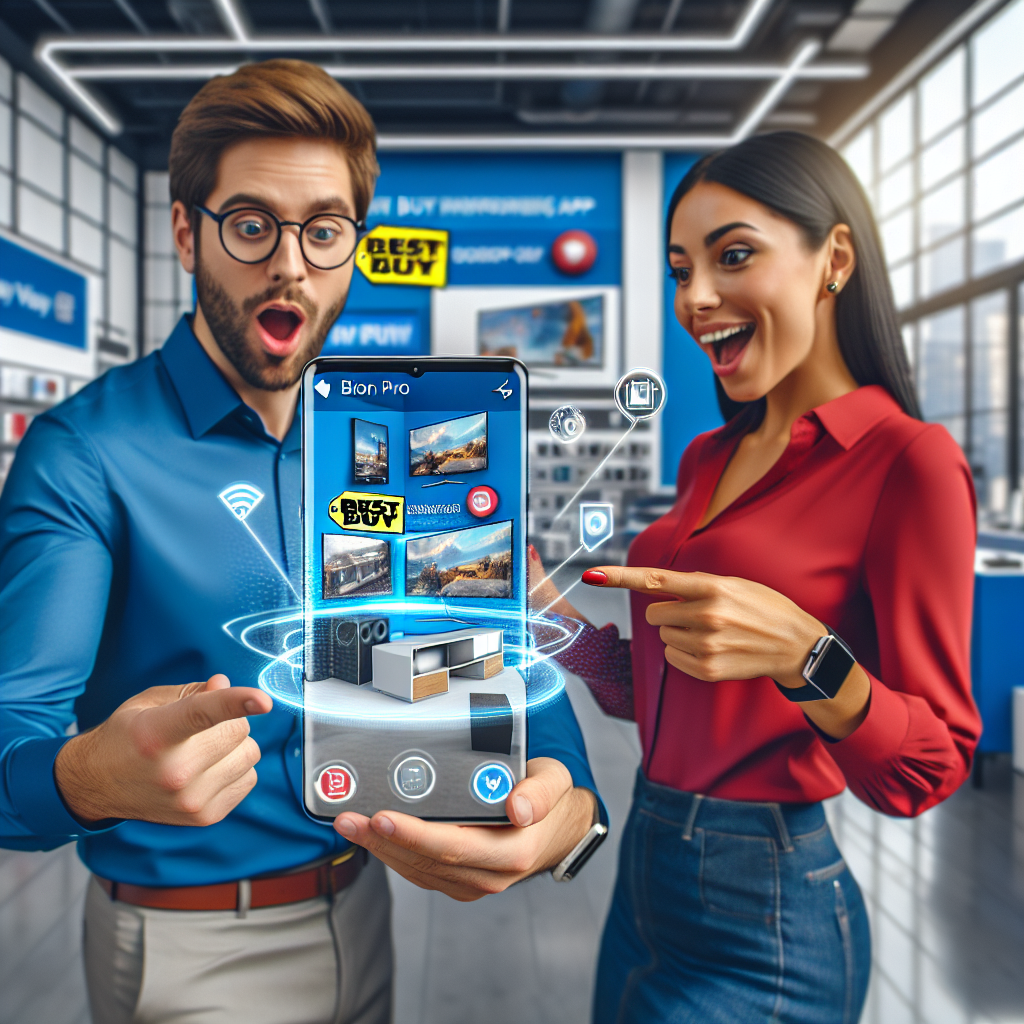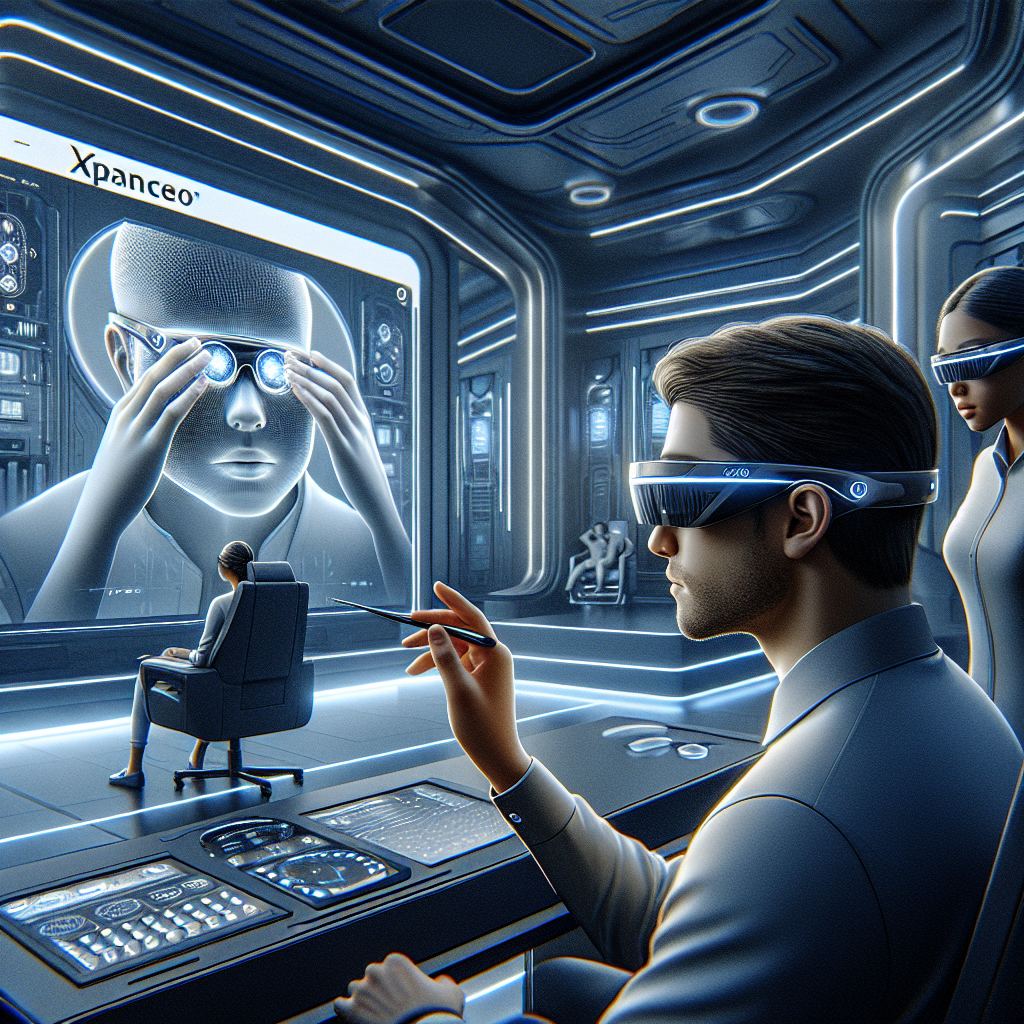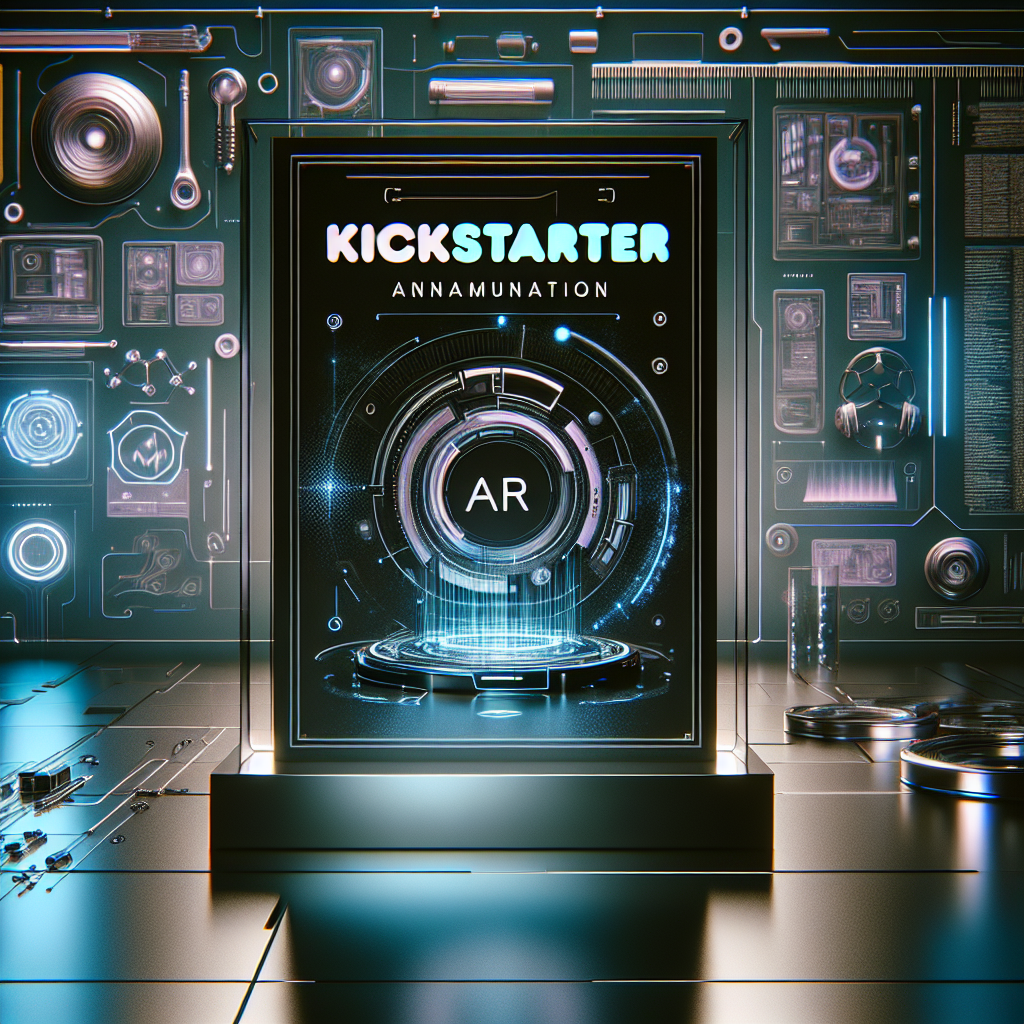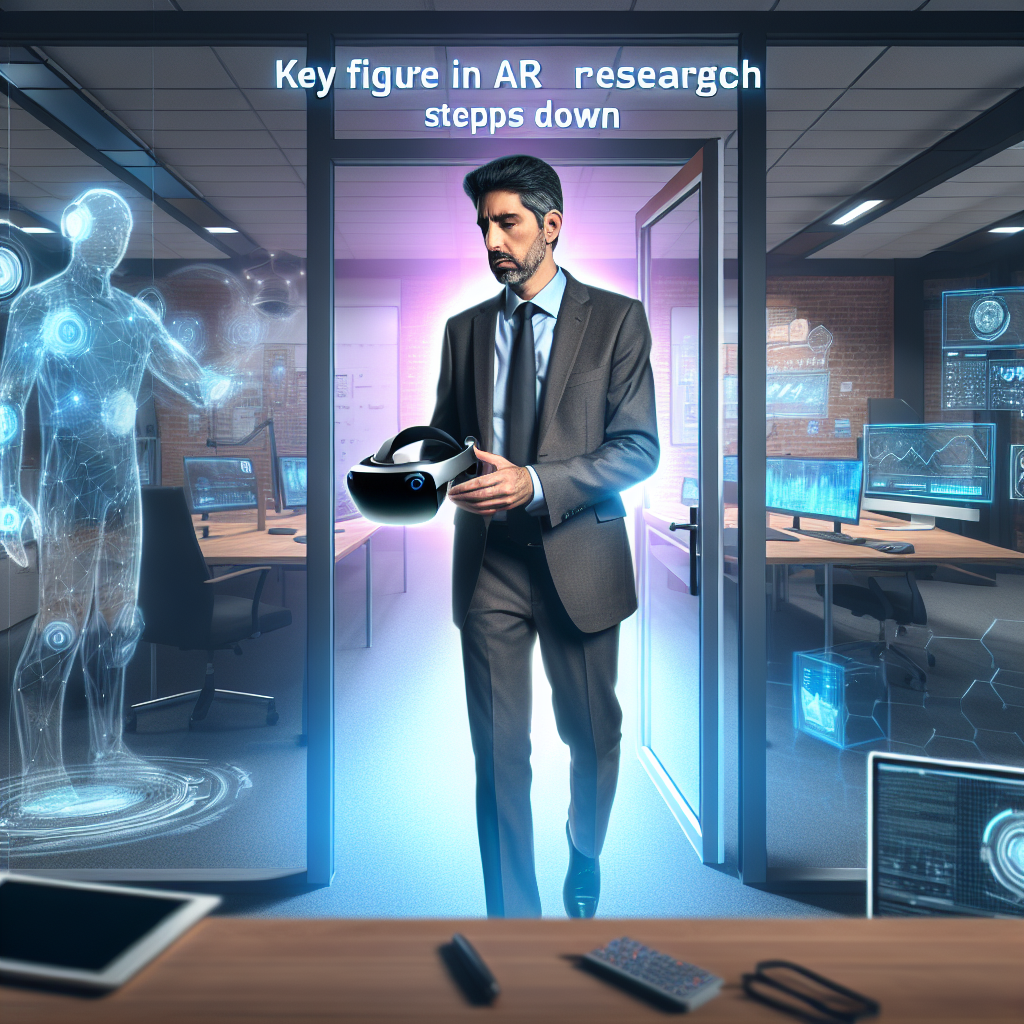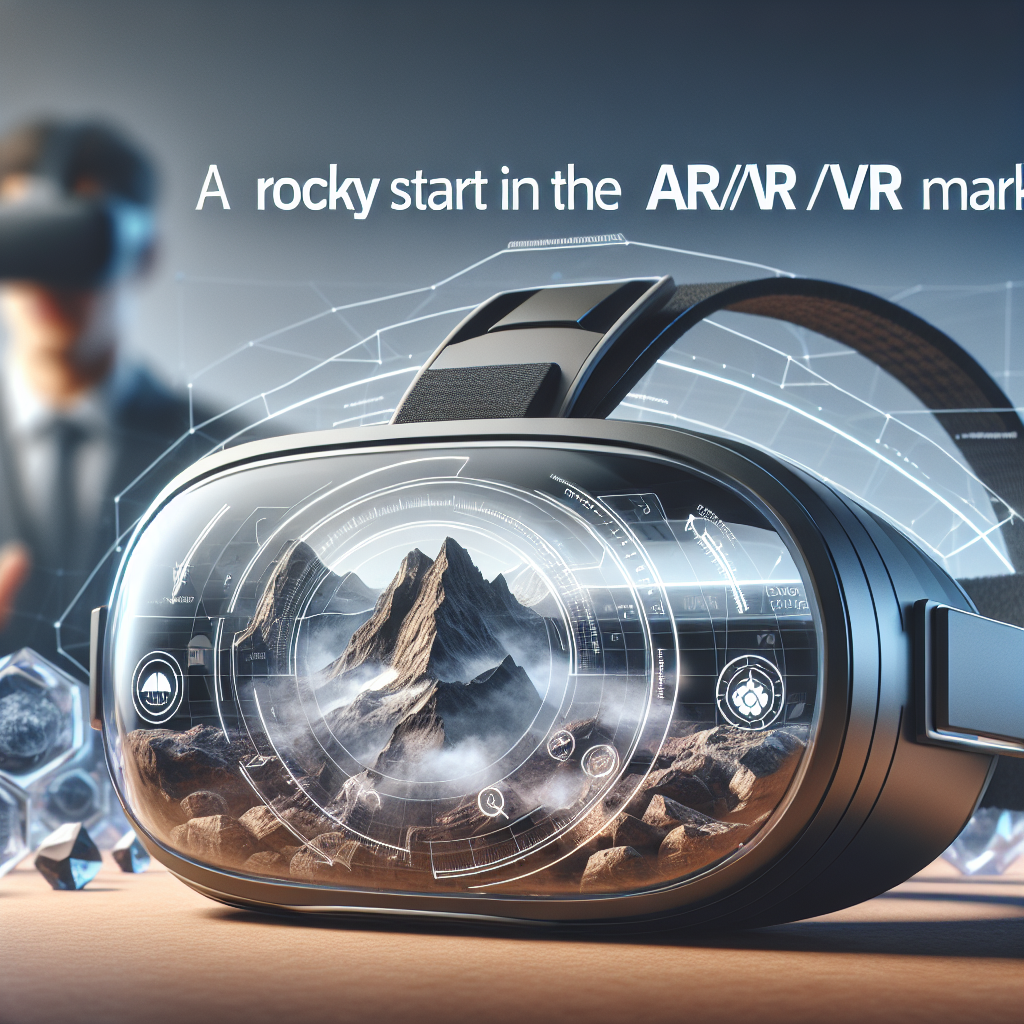Revolutionizing the Way We Shop: Best Buy’s Groundbreaking Augmented Reality App for Vision Pro
Best Buy, the renowned electronics retailer, is revolutionizing the way we shop with the of its groundbreaking augmented reality (AR) shopping app for Vision Pro. This innovative app harnesses the power of AR technology to provide customers with a truly immersive and interactive shopping experience. With the app, users can now visualize how products will look in their own homes, try out different options, and make more informed purchasing decisions. In this article, we will explore the features and benefits of Best Buy’s AR shopping app, delve into how it works, and discuss its potential impact on the retail industry.
Gone are the days of relying solely on product descriptions and static images when shopping for electronics. Best Buy’s AR shopping app takes shopping to a whole new level by allowing users to virtually place products in their own space and see how they fit and function. Whether you’re considering a new TV, sound system, or even a refrigerator, this app offers an unparalleled level of convenience and confidence in your purchasing decisions.
Key Takeaways
1. Best Buy has launched an innovative augmented reality shopping app called Vision Pro, which aims to enhance the shopping experience for customers.
2. The Vision Pro app utilizes advanced technology to allow customers to visualize how different products will look in their own homes before making a purchase.
3. By using augmented reality, the app enables customers to virtually place furniture, electronics, and other items in their living space to see how they fit and match with existing decor.
4. The app also provides detailed product information, reviews, and recommendations, helping customers make informed decisions and find the best products for their needs.
5. Best Buy’s Vision Pro app is available for both iOS and Android devices, making it accessible to a wide range of customers who can now enjoy a more interactive and personalized shopping experience.
Controversial Aspect 1: Privacy Concerns
One of the most controversial aspects of Best Buy’s augmented reality shopping app is the potential invasion of privacy. The app uses the smartphone’s camera to scan the user’s surroundings and overlay virtual objects onto the real world. While this technology has the potential to enhance the shopping experience, it also raises concerns about the collection and use of personal data.
Some critics argue that the app could be collecting sensitive information about users’ homes, such as the layout, decor, and even valuable possessions. This data could be used for targeted advertising or even shared with third parties without the user’s consent. Additionally, there are concerns about the app’s access to the smartphone’s camera and microphone, which could potentially be used for surveillance purposes.
On the other hand, supporters of the app argue that Best Buy has implemented strict privacy measures to protect user data. They claim that the app only collects necessary information for the augmented reality experience and does not store or share any personal data without explicit consent. Best Buy has also stated that they comply with all relevant privacy laws and regulations, and that user privacy is a top priority.
Controversial Aspect 2: Accessibility and Exclusion
Another controversial aspect of Best Buy’s augmented reality shopping app is its potential to exclude certain groups of people. The app relies on smartphones and requires a certain level of technical proficiency to use effectively. This means that individuals who do not own smartphones or are not familiar with using them may be left out of the augmented reality shopping experience.
Furthermore, the app may not be accessible to individuals with visual impairments or other disabilities. The reliance on visual cues and the need to navigate a virtual interface could pose challenges for those with limited or no vision. This raises concerns about the app’s inclusivity and whether it may further marginalize already disadvantaged groups.
Proponents of the app argue that while it may not be accessible to everyone, it still offers a new and innovative way of shopping for those who can use it. They argue that it is not feasible for every technology to be fully inclusive and that Best Buy should be commended for embracing augmented reality as a means of enhancing the shopping experience for those who can benefit from it.
Controversial Aspect 3: Impact on Brick-and-Mortar Stores
The of Best Buy’s augmented reality shopping app raises concerns about its impact on brick-and-mortar stores. As more consumers turn to online shopping, traditional retailers are already facing challenges in attracting customers to physical stores. The app’s ability to recreate a virtual shopping experience in the comfort of one’s home could further contribute to the decline of physical retail spaces.
Critics argue that the app may discourage customers from visiting physical stores, resulting in reduced foot traffic and potential job losses. They argue that the personal interaction and tactile experience of shopping in-store cannot be replicated through an app, and that the rise of augmented reality shopping may lead to the demise of traditional retail stores.
Supporters of the app, on the other hand, believe that it can coexist with brick-and-mortar stores and even complement the in-store shopping experience. They argue that the app can be used as a tool to research products and make informed decisions before visiting a physical store. Additionally, they suggest that retailers can adapt by incorporating augmented reality technology into their own stores, creating a seamless blend of online and offline shopping.
1. The Rise of Augmented Reality in Retail
Augmented reality (AR) has been gaining significant traction in the retail industry in recent years. This technology allows consumers to overlay digital information onto the real world, enhancing their shopping experience and providing them with a better understanding of products before making a purchase. Best Buy, a leading electronics retailer, has recognized the potential of AR and has introduced a groundbreaking shopping app called Vision Pro.
2. Introducing Best Buy’s Vision Pro
Vision Pro is an innovative augmented reality shopping app developed by Best Buy. It allows customers to virtually try out products before buying them, providing a realistic and immersive shopping experience. By using their smartphones or tablets, users can visualize how a product would look in their homes or offices, helping them make more informed purchasing decisions.
3. How Vision Pro Works
Using Vision Pro is simple and intuitive. Customers can browse Best Buy’s extensive product catalog and select the item they are interested in. The app then utilizes the device’s camera to project a 3D representation of the product into the real world. Users can move the product around, resize it, and view it from different angles, giving them a comprehensive understanding of its features and design.
4. Enhancing the Customer Experience
Vision Pro significantly enhances the customer experience by bridging the gap between online and in-store shopping. With the app, customers no longer have to rely solely on product descriptions and static images. They can see how a TV would fit on their living room wall, how a new piece of furniture would complement their existing decor, or how a speaker system would look in their home theater setup. This level of interactivity and visualization helps customers feel more confident in their purchasing decisions.
5. Personalization and Customization
One of the key features of Vision Pro is its ability to personalize and customize the shopping experience. Users can adjust various parameters such as color, size, and placement to match their specific preferences and requirements. For example, if a customer is considering buying a new refrigerator, they can see how different models would look in their kitchen and choose the one that best suits their style and space.
6. Real-World Examples
Vision Pro has already been successfully implemented in several Best Buy stores, garnering positive feedback from customers. One notable example is the use of the app in the home theater section. Customers can visualize how different TV and speaker combinations would look and sound in their own homes, making it easier for them to make an informed decision. This level of personalization and customization sets Best Buy apart from its competitors and creates a unique shopping experience.
7. The Future of Augmented Reality Shopping
Best Buy’s Vision Pro app is just the beginning of a new era in augmented reality shopping. As technology continues to advance, we can expect even more sophisticated and immersive experiences. Imagine being able to virtually walk through a fully furnished showroom, interact with products, and receive personalized recommendations based on your preferences. The possibilities are endless, and Best Buy is at the forefront of this exciting evolution in retail.
8. Overcoming Challenges and Concerns
While augmented reality shopping offers many benefits, there are also challenges and concerns that need to be addressed. One of the main concerns is the potential for misrepresentation or inaccurate visualization. Best Buy has taken steps to mitigate this risk by ensuring that the app’s product models are as accurate and realistic as possible. Additionally, customer feedback and continuous improvement are crucial in refining the app’s performance and addressing any issues that may arise.
9. The Impact on Online and In-Store Sales
Vision Pro has the potential to impact both online and in-store sales for Best Buy. By providing customers with a more immersive and interactive shopping experience, the app can increase online conversion rates and reduce the number of returns due to inaccurate expectations. Furthermore, the app can drive foot traffic to physical stores as customers seek to experience products in person after using Vision Pro. This integration of online and in-store shopping can lead to a more holistic and seamless customer journey.
Best Buy’s of the Vision Pro augmented reality shopping app demonstrates their commitment to enhancing the customer experience and embracing cutting-edge technology. With the ability to virtually try out products before buying them, customers can make more informed decisions and feel confident in their purchases. As augmented reality continues to evolve, we can expect even more exciting developments in the retail industry, revolutionizing the way we shop.
Augmented Reality Technology
Best Buy’s new augmented reality shopping app for Vision Pro utilizes cutting-edge technology to enhance the shopping experience for customers. Augmented reality (AR) is a technology that overlays digital information, such as images, videos, or 3D models, onto the real world. By using the camera and sensors of a smartphone or tablet, the app is able to detect the user’s surroundings and project virtual objects onto the screen in real-time.
Computer Vision and Object Recognition
The app employs computer vision algorithms to analyze the video feed from the device’s camera. These algorithms are capable of identifying and tracking objects in the real world, allowing the app to accurately place virtual objects in the user’s environment. By using object recognition techniques, the app can identify specific products or items, such as televisions, speakers, or furniture, and overlay relevant information or virtual representations onto them.
Real-Time Rendering
One of the key challenges in augmented reality is rendering virtual objects in real-time, seamlessly integrating them with the real world. Best Buy’s app utilizes advanced rendering techniques to achieve this. The app takes into account the lighting conditions and the surrounding environment to ensure that the virtual objects appear realistic and properly aligned with the real world. This requires complex calculations and optimizations to render the virtual objects at the right size, perspective, and with accurate lighting and shadows.
Integration with Best Buy’s Product Catalog
The app is integrated with Best Buy’s extensive product catalog, which includes detailed information about thousands of products. By leveraging this catalog, the app can provide users with relevant information about the products they are interested in. When the app recognizes a specific product in the user’s environment, it can display detailed specifications, customer reviews, pricing information, and even related accessories or complementary products.
User Interface and Interaction
The augmented reality shopping app features an intuitive user interface that allows users to interact with virtual objects and explore product information seamlessly. When the app detects a product, it overlays virtual buttons or icons that users can tap to access additional information or perform actions. For example, users can tap on a virtual button to view different color options for a product or to add it to their shopping cart.
Gestures and Interactions
The app supports various gestures and interactions to enhance the user experience. Users can rotate virtual objects by swiping their fingers across the screen, allowing them to view the product from different angles. Pinching gestures can be used to resize virtual objects, enabling users to see how they would fit in their space. Additionally, the app allows users to move virtual objects around the screen, providing a sense of control and customization.
Integration with Best Buy’s E-commerce Platform
Best Buy’s augmented reality shopping app seamlessly integrates with the company’s e-commerce platform. Users can add products to their shopping cart directly from the app and proceed to checkout without leaving the augmented reality experience. This integration ensures a smooth transition from browsing products in augmented reality to purchasing them online.
Device Compatibility and Performance
The app is designed to work on a wide range of smartphones and tablets, ensuring accessibility for a large user base. It leverages the processing power and capabilities of modern devices to deliver a smooth and immersive augmented reality experience.
Platform Compatibility
The app is available for both iOS and Android devices, making it accessible to users across different platforms. It takes advantage of the specific features and capabilities of each platform, such as the camera, sensors, and processing power, to deliver the best possible experience.
Optimization for Performance
To ensure optimal performance, the app is optimized to run efficiently on a variety of devices. It leverages hardware acceleration and utilizes techniques like occlusion culling to optimize rendering and reduce the strain on the device’s resources. This allows the app to provide a smooth and responsive augmented reality experience, even on lower-end devices.
Network Connectivity
The app requires an internet connection to access Best Buy’s product catalog and e-commerce platform. However, it also supports offline functionality for certain features, such as browsing previously viewed products or accessing cached product information. This ensures that users can still interact with the app, even in areas with limited or no network connectivity.
The Rise of Augmented Reality Technology
Augmented reality (AR) technology has been steadily gaining popularity over the past decade. It combines computer-generated images with the real world, enhancing the user’s perception and interaction with their environment. The concept of AR was first introduced in the 1960s, but it wasn’t until the 2010s that it started to become more accessible to the general public.
In 2016, the release of the mobile game Pokémon Go brought AR into the mainstream. The game allowed players to capture virtual creatures in the real world using their smartphones. This breakthrough demonstrated the potential of AR technology and sparked interest in its applications beyond gaming.
Early Adoption of AR in Retail
Retailers quickly recognized the potential of AR to enhance the shopping experience. In 2017, IKEA launched its “IKEA Place” app, which allowed users to virtually place furniture in their homes using AR. This enabled customers to visualize how products would look and fit in their space before making a purchase.
Following IKEA’s success, other retailers began exploring AR as well. In 2018, online eyewear retailer Warby Parker introduced its Virtual Try-On feature, allowing customers to virtually try on glasses using their smartphone camera. This feature addressed a common pain point in online shopping for eyewear, as customers could now see how different frames looked on their face without physically trying them on.
Best Buy’s Entry into AR Shopping
Best Buy, a leading electronics retailer, recognized the potential of AR technology to enhance the shopping experience for its customers. In 2019, the company introduced its augmented reality shopping app called Vision Pro. The app allowed users to virtually place electronics products in their homes, giving them a sense of how the products would look and fit in their space.
Best Buy’s Vision Pro app was designed to address the challenges of buying electronics online. Many customers hesitate to make big-ticket purchases without physically seeing and interacting with the products. The app aimed to bridge this gap by providing a virtual shopping experience that closely resembled the in-store experience.
Evolution of Best Buy’s AR Shopping App
Since its initial launch, Best Buy’s Vision Pro app has evolved to meet the changing needs and expectations of its customers. The app has continually improved its AR technology, making the virtual placement of products more accurate and realistic. This has helped customers make more informed purchasing decisions by visualizing how different electronics would look in their homes.
In addition to enhancing the visual experience, Best Buy has also expanded the functionality of its AR shopping app. The app now includes features such as product reviews, detailed specifications, and personalized recommendations based on the user’s browsing history and preferences. These additions have transformed the app from a simple visualization tool to a comprehensive shopping companion.
Best Buy has also integrated its AR shopping app with its online and physical stores. Customers can now seamlessly transition from browsing products on the app to making a purchase online or visiting a nearby Best Buy store. This integration provides a seamless omni-channel shopping experience, allowing customers to choose the most convenient way to complete their purchase.
Current State and Future Potential
Best Buy’s augmented reality shopping app, Vision Pro, has become a valuable tool for customers looking to buy electronics. The app’s ability to virtually place products in the user’s environment has helped overcome the limitations of online shopping and has bridged the gap between the digital and physical retail experience.
Looking ahead, the potential of AR technology in retail is vast. As AR continues to advance, we can expect to see more retailers embracing this technology to enhance the shopping experience. From virtual fitting rooms for clothing to virtual home improvement simulations, AR has the potential to revolutionize how we shop.
Best Buy’s of the Vision Pro app is just one example of how AR is being used to transform the retail industry. As technology continues to evolve, we can anticipate even more innovative applications of AR that will further blur the lines between the digital and physical retail experience.
Case Study 1: Enhancing the In-Store Experience
One of the key benefits of Best Buy’s augmented reality shopping app for Vision Pro is its ability to enhance the in-store experience for customers. This was evident in the case of Sarah, a customer who was looking to purchase a new television. With the help of the app, she was able to visualize how different TV models would look in her living room before making a purchase.
Sarah used the app to scan her living room and select the desired TV size. She then virtually placed different TV models on her wall to see which one would fit best. This allowed her to make an informed decision based on how the TV would actually look in her home, rather than relying solely on in-store displays.
By using the augmented reality shopping app, Sarah was able to save time and effort by eliminating the need to physically move and compare different TV models. She also felt more confident in her purchase decision, knowing that the TV she chose would be a perfect fit for her living room.
Case Study 2: Personalized Recommendations
Another key feature of Best Buy’s augmented reality shopping app is its ability to provide personalized recommendations based on customers’ preferences and needs. This was exemplified in the case of John, a tech enthusiast looking to upgrade his gaming setup.
John used the app to scan his current gaming setup, and the app analyzed the space and his preferences to recommend the best gaming accessories and equipment. It suggested a gaming chair that would provide optimal comfort during long gaming sessions, a gaming keyboard with customizable RGB lighting, and a high-performance gaming mouse.
With the help of the app’s personalized recommendations, John was able to make an informed decision and select the gaming accessories that best suited his needs and preferences. This not only enhanced his gaming experience but also saved him the hassle of researching and comparing different products on his own.
Case Study 3: Seamless Online Shopping Integration
Best Buy’s augmented reality shopping app also seamlessly integrates with its online shopping platform, providing a convenient and efficient shopping experience. This was evident in the case of Lisa, a customer who wanted to purchase a new refrigerator for her kitchen.
Lisa used the app to scan her kitchen and select the desired refrigerator size and style. The app then displayed a range of options from Best Buy’s online catalog, allowing Lisa to compare different models, read customer reviews, and check availability in real-time.
Once Lisa made her decision, she was able to complete the purchase directly through the app, with the option of either picking up the refrigerator from a nearby Best Buy store or having it delivered to her doorstep. This seamless integration between the app and Best Buy’s online platform made the entire shopping process hassle-free and convenient for Lisa.
FAQs
1. What is the Best Buy Augmented Reality Shopping App for Vision Pro?
The Best Buy Augmented Reality Shopping App for Vision Pro is a cutting-edge application that allows users to experience a virtual shopping environment through their smartphones or tablets. By using augmented reality technology, the app enables users to visualize how products would look in their own space before making a purchase.
2. How does the app work?
The app uses the camera on your device to scan your surroundings and create a virtual representation of your space. It then overlays 3D models of products onto this virtual space, allowing you to see how they would fit and look in your home or office.
3. What products can I try out with the app?
The app currently supports a wide range of products, including furniture, home appliances, electronics, and more. You can browse through Best Buy’s extensive catalog and virtually place items in your space to see how they would look.
4. Can I customize the virtual representation of my space?
Yes, the app allows you to customize the virtual representation of your space by adjusting the dimensions, colors, and other attributes. This ensures a more accurate visualization of how the products would fit and match your existing decor.
5. Can I share the virtual shopping experience with others?
Yes, the app offers a sharing feature that allows you to capture and share screenshots or videos of the virtual shopping experience with your friends and family. This can be helpful when seeking opinions or recommendations before making a purchase.
6. Is the app available for both iOS and Android devices?
Yes, the Best Buy Augmented Reality Shopping App for Vision Pro is available for both iOS and Android devices. You can download it from the App Store or Google Play Store, depending on your device.
7. Does the app require any additional accessories or devices?
No, the app utilizes the built-in camera and sensors of your smartphone or tablet, so no additional accessories or devices are required. Simply download the app, grant the necessary permissions, and start exploring the virtual shopping experience.
8. Is the app user-friendly for all age groups?
Yes, the app is designed to be user-friendly for all age groups. It features an intuitive interface with easy-to-understand controls, making it accessible for both tech-savvy individuals and those less familiar with augmented reality technology.
9. Can I make purchases directly through the app?
Yes, the app allows you to make purchases directly from Best Buy’s online store. Once you have selected a product and visualized it in your space, you can proceed to the checkout process within the app and complete your purchase.
10. Is the app secure to use?
Yes, the Best Buy Augmented Reality Shopping App for Vision Pro is designed with security in mind. It follows industry best practices to ensure the safety of your personal information and financial transactions. However, it is always recommended to exercise caution and use secure networks when making online purchases.
1. Embrace the Power of Augmented Reality
With Best Buy’s of an augmented reality shopping app, it’s time to embrace this technology and explore its potential in your daily life. Augmented reality can enhance your shopping experience, provide valuable information, and even entertain you.
2. Try Before You Buy
One of the key advantages of the augmented reality shopping app is the ability to try products before making a purchase. Take advantage of this feature to see how furniture would look in your home, how clothes would fit, or how a new gadget would function.
3. Explore Product Details
Use the app to dive deeper into the details of the products you are interested in. Augmented reality can provide additional information, such as specifications, customer reviews, and compatibility options, helping you make more informed purchasing decisions.
4. Compare Prices and Options
Don’t settle for the first option you find. Best Buy’s augmented reality app allows you to compare prices and options from different brands and retailers. Take advantage of this feature to find the best deal and ensure you’re getting the most value for your money.
5. Get Expert Advice
Best Buy’s Vision Pro feature within the app connects you with knowledgeable experts who can guide you through your shopping journey. Don’t hesitate to seek their advice and expertise, whether you have questions about a product’s features or need help troubleshooting.
6. Stay Updated on Deals and Promotions
Make sure to enable notifications within the app to stay informed about the latest deals and promotions. Best Buy often offers exclusive discounts and limited-time offers, so keeping up-to-date will help you save money on your purchases.
7. Create Wish Lists
Use the augmented reality shopping app to create wish lists of products you’re interested in. This feature allows you to save items for future reference, compare them later, and receive notifications when they go on sale.
8. Share Your Experience
If you find a product you love or have a positive experience using the app, don’t hesitate to share it with others. Write reviews, recommend products to friends and family, and spread the word about the benefits of augmented reality shopping.
9. Explore New Categories
Don’t limit yourself to the products you usually shop for. Use the app to explore new categories and discover innovative solutions that could enhance your daily life. Augmented reality opens up a world of possibilities, so take advantage of it.
10. Provide Feedback
As you use the augmented reality shopping app, provide feedback to Best Buy. Share your thoughts on the user experience, suggest improvements, and report any issues you encounter. Your feedback will help them refine the app and provide a better service to all users.
In conclusion, Best Buy’s of the Augmented Reality Shopping App for Vision Pro is a game-changer in the retail industry. The app not only enhances the shopping experience for customers but also provides valuable tools and information for Vision Pro employees. By leveraging augmented reality technology, Best Buy is able to bridge the gap between online and in-store shopping, allowing customers to visualize products in their own space before making a purchase. This not only increases customer satisfaction but also reduces the likelihood of returns, ultimately boosting the company’s bottom line.
Furthermore, the app empowers Vision Pro employees by equipping them with real-time product information and recommendations. This not only saves time but also ensures that customers receive accurate and personalized assistance. The app’s ability to identify compatible products and suggest relevant accessories not only enhances the shopping experience but also increases the likelihood of cross-selling and upselling. Overall, Best Buy’s Augmented Reality Shopping App for Vision Pro demonstrates the company’s commitment to innovation and customer-centricity, setting a new standard for the retail industry. As technology continues to evolve, it will be exciting to see how other retailers follow suit and adopt similar augmented reality solutions to enhance the shopping experience for their customers.
